26 of the most powerful women engineers in 2016
No. 26: Intel's Sumita Basu

No. 25: Western New England University's Heidi Ellis

Heidi Ellis is a professor of Computer Science and Information Technology at Western New England University.
In addition to teaching college students how to code, she has herself been a contributor to many important open-source projects for more than a decade.
She's one of the founding members of the Humanitarian Free and Open Source Software (HFOSS), where students write free, open-source software for projects that improve the human condition, such as apps that help during natural disasters and track disease outbreaks.
Ellis is a founding member of a project called Foss2Serve, which helps encourage more students to participate in HFOSS by educating professors on it. She's also working with Red Hat to expand its Professors Open Source Software Experience, encouraging more professors to teach open-source coding.
No. 24: BofA's Jennifer Braganza
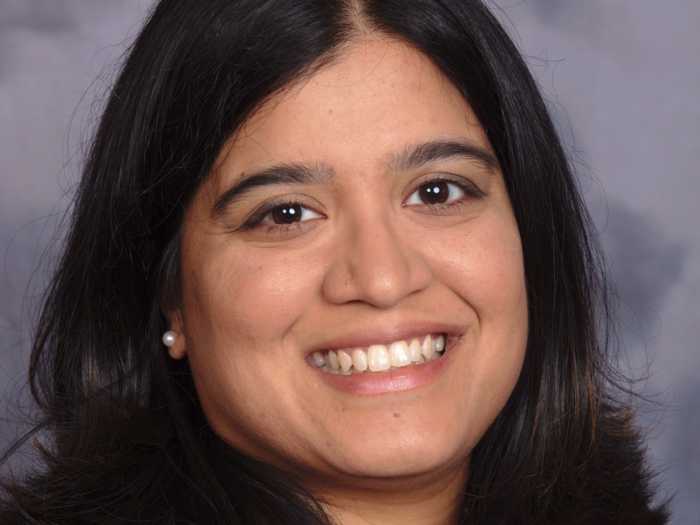
Jennifer Braganza is a business strategy manager at Bank of America running a federal compliance program that impacts 40,000 employees.
She has also overseen other projects at BofA, some of which have impacted millions of its customers.
Braganza's skill is to bring her training in multiple forms of engineering to complex business projects. She has undergrad degrees in chemical engineering and in industrial and operations engineering. Plus she has two master's degrees in engineering from two different universities.
When not orchestrating complicated projects for BofA involving millions of people, she's working with the animal welfare organization she founded, Play with a Purpose Pet Academy and Rescue.
No. 23: Bohemia Interactive Simulations' Eva Saravia
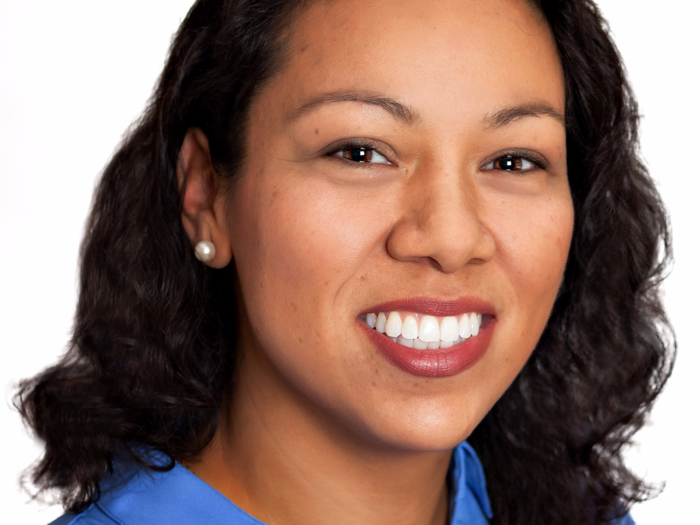
Eva Saravia is vice president of global programs at Bohemia Interactive Simulations, a company that helps train military forces worldwide through simulation programs.
BIS's simulation software is like a video game, only it's not about pretending to kill zombies, but training real soldiers to face real combat situations. The company recently scored a $12.3 million, five-year contract from the U.S. Marines and counts military organizations in the UK and Australia as customers, too.
Saravia came to BIS from Northrop Grumman, and is the company's only female senior executive.
No. 22: John Deere's Rosalind Fox
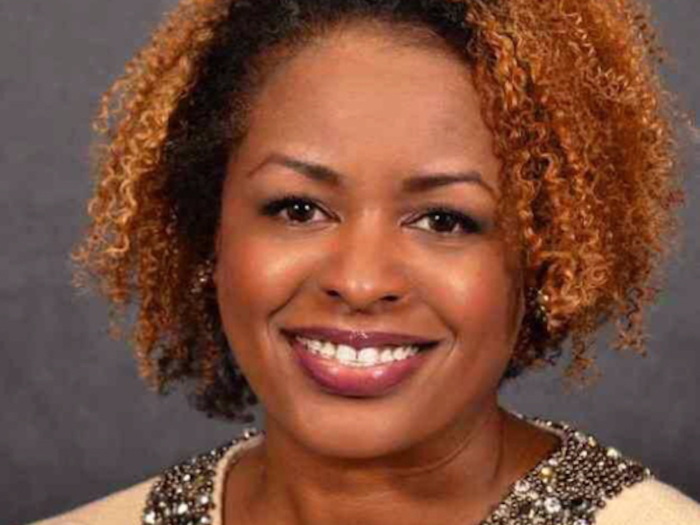
Rosalind Fox oversees one of John Deere's factories where she's been earning accolades for improving employee safety and per-employee profitability.
She also served as Deere's director of global diversity, creating worldwide programs that helped diversity become part of what the company's top leaders are judged on.
Fox also helped orchestrate a partnership with the Society of Women Engineers (SWE) that helped 500 female employees join the organization.
She also helped orchestrate a program called John Deer Inspire, which encourages kids and people of color to consider STEM careers, then provides volunteers from the company's workforce to visit schools to help with things like robotics competitions.
No. 21: AmerisourceBergen's Jessica Rannow
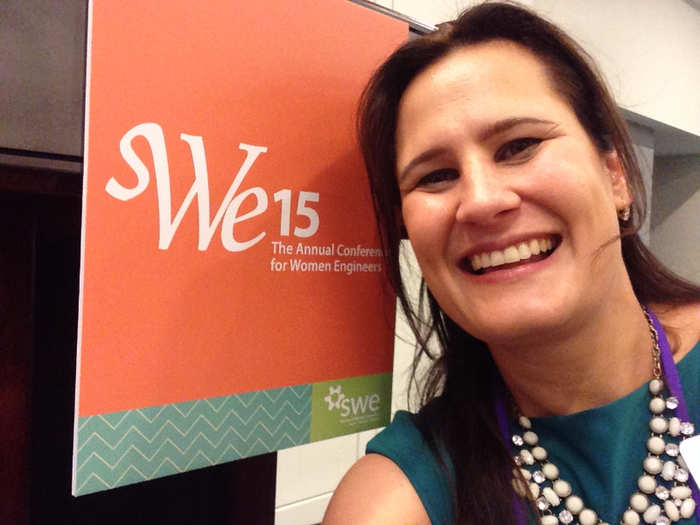
Jessica Rannow is a senior industrial engineer and engineering project manager at the $135 billion pharmaceutical behemoth AmerisourceBergen.
For her day job, she's doing things like developing vision equipment and managing supply-chain compliance needs.
In her volunteer time, she's president-elect of the Society of Women Engineers, the world's largest professional organization for women in all engineering disciplines, with over 34,000 members worldwide. (Her term will start in July).
SWE offers outreach, scholarships, and all kinds of other support to encourage women who like to build stuff to pursue their engineering dreams.
Rannow put herself through college with big help from scholerships. "One scholarship also included a HP Graphing Calculator which was every 90’s engineering students dream," she remembers.
No. 20: Affirm's Trisha Kothari
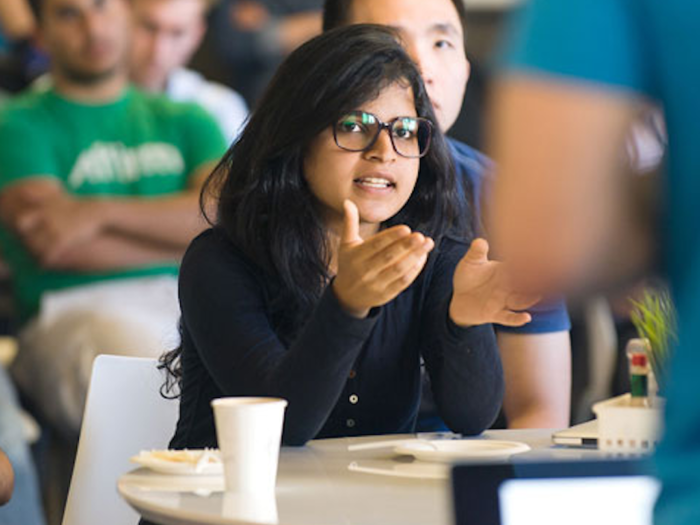
At age 23, Trisha Kothari is Affirm’s first female engineer at the financial technology startup co-founded and led by Max Levchin (the former cofounder of PayPal).
Affirm turns your smartphone into a credit card of sorts, allowing you to make monthly payments on things you buy from merchants that accept it.
"Trisha was instrumental in building the core aspects of a financial platform that powers everything we do," Affirm's COO Huey Lin said about her.
Levchin even goes so far as to say that “Trisha Kothari is one of the most exciting up-and-coming coders in America.”
Before joining Affirm, Kothari did several internships at Google and at LinkedIn. She also earned a Google Anita Borg scholarship and one from Microsoft and is a member of the high-IQ organization Mensa.
No. 19: Jibo's Cynthia Breazeal
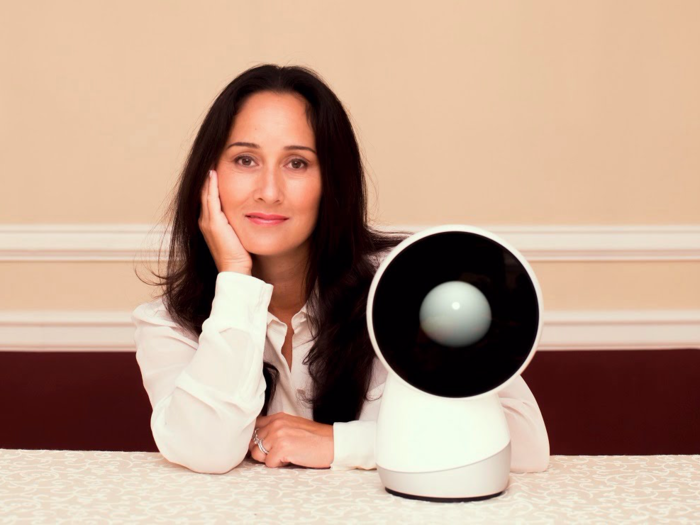
Cynthia Breazeal is the founder and CEO of Jibo, which is building what it calls the worlds first "social robot" for the home.
Jibo is a bit like Amazon's Alexis, only it can swivel and sort of "look" at people as they are talking. Jibo chats, takes photos, acts as a personal assistant, and also functions as a tutor and home security agent, among other uses.
Jibo raised over $3.7 million on Indiegogo from over 7,400 backers. And from there it raised another $50 million in VC funding.
Breazeal is one of the pioneers of this kind of "social," personal robotics.
She's an associate professor at MIT where she founded the Personal Robots Group at the Media Lab, and has won an armful of awards for her research.
No. 18: Adafruit's Limor Fried
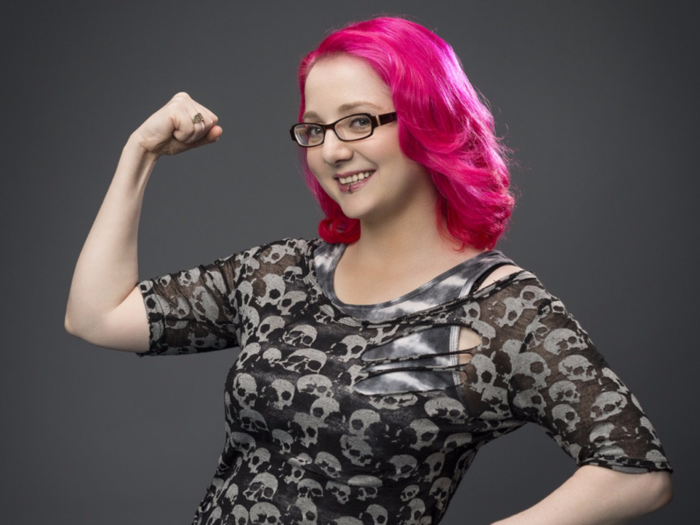
Limor Fried is the founder and CEO of Adafruit, a company she launched in 2005 from her dorm room at MIT while she was earning her masters in engineering.
Adafruit sells electronics and tools to the Maker ecosystem. The company has over 50 employees and a 15,000+ sq. ft. factory in the heart of New York, all done without taking any outside investment.
Fried has become the face of the women maker movement, too, between her trademark bright pink hair and her picture on the cover on Wired magazine's Maker issue. (She says she's the first female engineer ever to land the cover of Wired.)
No. 17: Kimberly Bryant of Black Girls Code
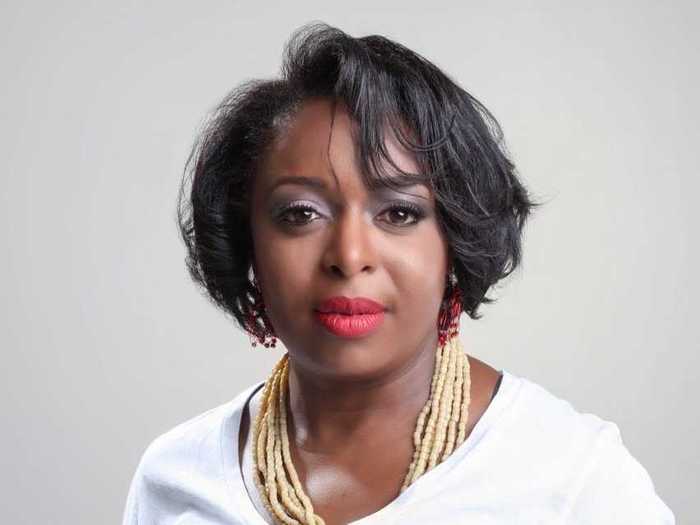
Kimberly Bryant trained as an electrical engineer and computer programmer, then cut her teeth running major IT projects for a host of huge pharmaceutical companies.
But she always loved mentoring kids. So in 2011, she founded Black Girls Code, a non-profit focused on teaching girls ages 6-17 programming skills.
The organization came from her own experience, remembering "feeling culturally isolated," and that "few of my classmates looked like me" when she was studying computer science herself.
There's still a scarcity of African American women in STEM fields, so Bryant stepped up to give these bright young minds training and exposure. BGC operates in cities like Boston, LA, Dallas, and Chicago, and is the subject of an award-winning documentary.
Bryant has also become a Pahara-Aspen Institute Fellow, an organization for excellence in education.
No. 16: littleBits' Ayah Bedeir
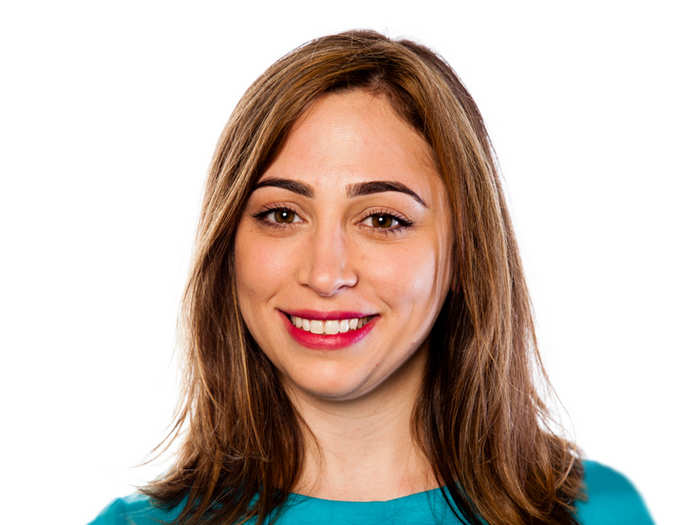
Ayah Bdeir is the founder and CEO of littleBits, an open source library of modular electronics that snap together with magnets.
These devices have changed the way kids learn to build things and explore electronics. Bdeir has raised $62.34 million total in VC funding for her company.
She's known as one of the players that ushered in both the "Maker" movement and the open-source hardware movement. She's also a co-founder of the Open Hardware Summit, an annual conference for people who build stuff and share their designs freely.
Bdeir has earned a string of accolades and awards for her role in both of these movements. Originally from Lebanon, Bdeir now lives in New York.
No. 15: Linux Foundation's Emily Ratliff

Emily Ratliff is the senior director of security for the Linux Foundation and is known in the Linux world as "a serious bad ass," those close to her tell us.
She's quiet and reserved until you start asking technical questions around security, and then she lights up. She's articulate and, like all the women on this list, wickedly smart.
She's helping the open-source world avoid huge security problems like the kind that led to the Heartbleed hole.
And she's leading the Linux Foundation's major "Core Infrastructure Initiative," which does security reviews for some of the most important software in the world.
No. 14: Oracle's Vinita Paunikar
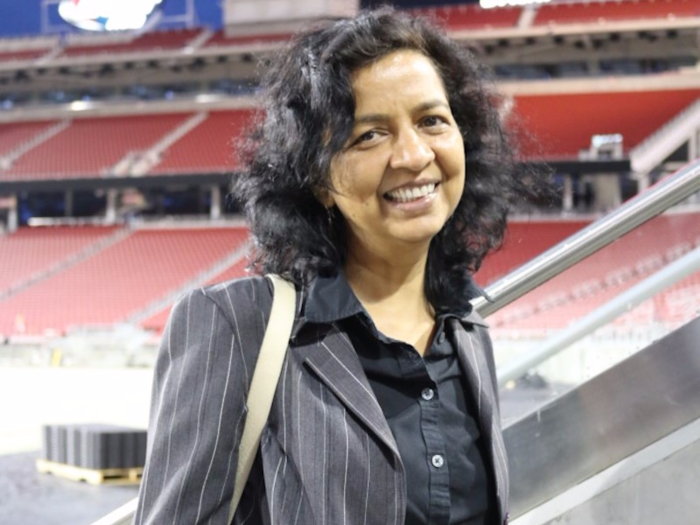
Vinita Paunikar is a vice president at Oracle responsible for release management of Oracle’s products and services.
She created a release management team that has launched 200 product releases across more than 20 product lines.
She's also worked on several of Oracle’s mainstay products, including Oracle’s flagship systems management solution, Enterprise Manager Cloud Control, which is now also the core management platform for Oracle’s cloud services.
No 13: Google's Daniela Raijman
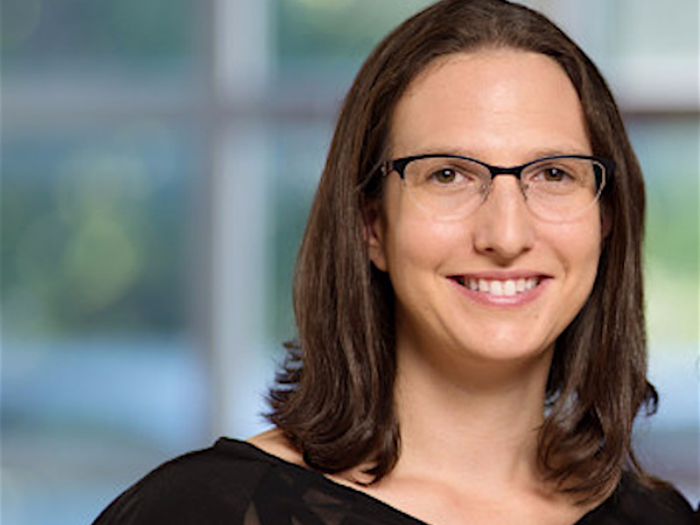
Daniela Raijman joined Google in 2007 as the first female engineer at Google’s R&D center in Tel Aviv, Israel.
She has worked on YouTube products, and is now part of the Technical Infrastructure organization, working on software used to power and monitor Google’s network.
But she's on this list for cofounding an organization called Mind the Gap, a worldwide program that encourages girls to pursue math, science, and technology education.
The program, now in its 8th year, started in Israel and has expanded to Japan, Poland, Brazil, and North America.
Raijman and her Mind the Gap cofounder Michal Segalov recently won the Anita Borg Institutes' Abie Award for the program.
No. 12: Google's Michal Segalov
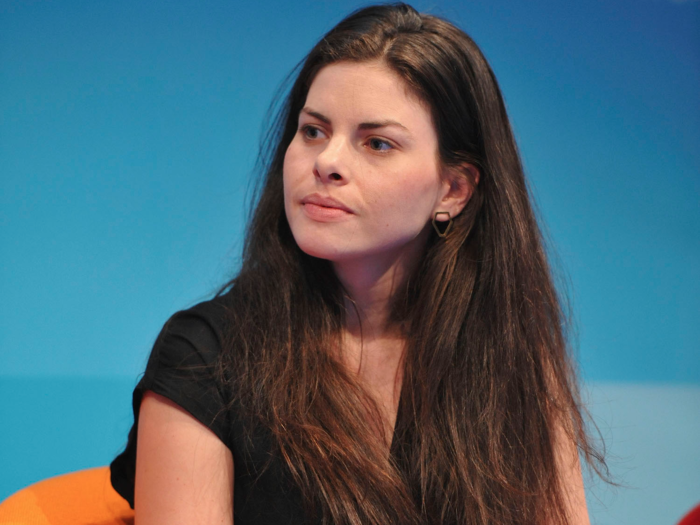
Michal Segalov joined Google in 2007 at the Tel Aviv offices in Israel but recently moved to the Googleplex in Mountain View, Calif.
She is a software engineer and manager who leads a group of engineers on the Google Play team, focusing on apps and games, discovery, Play Store consumer features, and game APIs for developers.
Segalov cofounded the Mind The Gap with Daniela Raijman, a program that encourages high school girls to study computer science and math in high school and beyond.
In its eight years, the program now has more than 10,000 participants globally.
No. 11: Intel Labs' Lakecia Gunter
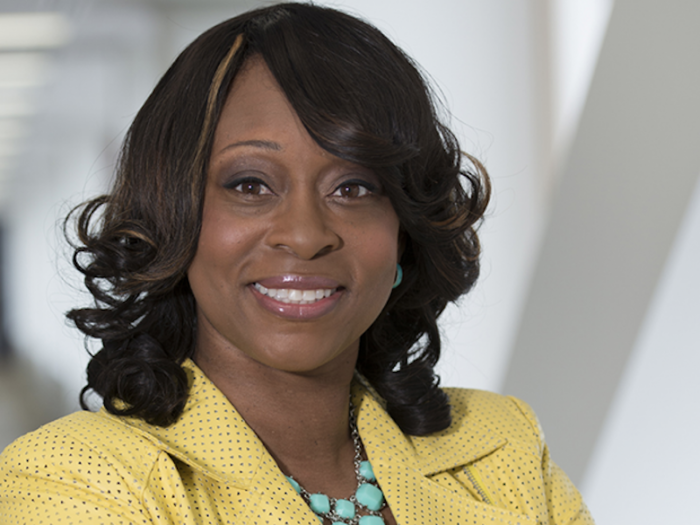
Lakecia Gunter started her career as an intern for Hewlett-Packard and then left the tech industry for a while to teach math to 7th graders.
She then left teaching to work for the Department of Defense before jumping to Intel.
At Intel, she worked her way up from a test engineering manager to become a leader at Intel's famous R&D labs.
Throughout her career she has also tirelessly worked on community efforts, mentoring at-risk youth. She's founded an outreach program which brings more than 100 kids to Intel's campuses every year to learn about engineering careers, plus she volunteers with other non-profits like the Urban League of Portland.
For her career and social achievements, Gunter was the 2015 recipient of the Society of Women Engineers Prism Award.
No. 10: Ford's Juliette McCoy
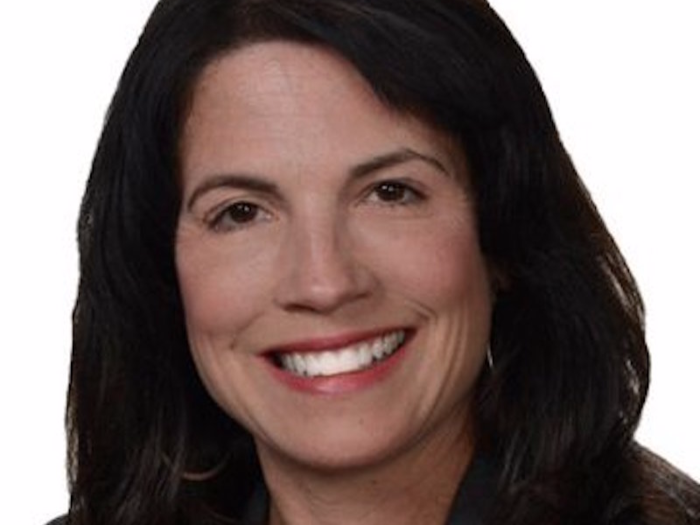
Juliette McCoy has been with Ford for nearly 30 years, working up to become a global chief engineer for Powertrain control systems.
Her work on these systems spans vehicles from both Ford and Lincoln, touching the work of about 1,000 employees in 9 countries.
McCoy has accumulated a number of patents and awards for her work, including receiving the 2015 Global Leadership Award from the Society of Women Engineers.
In addition to working on cars, McCoy has been engineering Ford's workplace, creating a global database where employees can report obstacles in the workplace.
As a result, Ford has made thousands of changes for employees, and seen its employee satisfaction scores rise.
McCoy also hacked employee training, creating new methods that became a standard in the company.
No. 9: Make in LA's Noramay Cadena
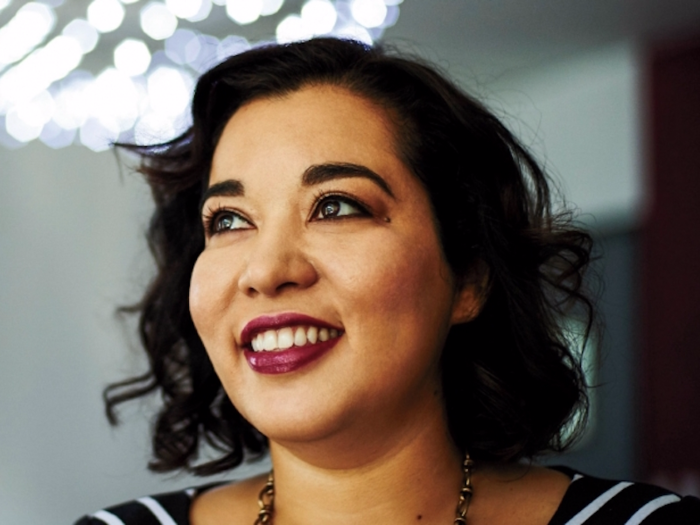
Noramay Cadena is a cofounder of Make in LA, a startup accelerator focused on hardware projects.
But she came to national recognition well before that for her achievements in the aerospace industry.
Prior to launching Make in LA, Cadena spent 12 years at Boeing, leading a team that worked on Boeing's capsule transporter for the International Space Station, which is scheduled to be operational in 2017. She's also helped build satellites and airplanes.
Plus she's the cofounder and executive director for the Latinas in STEM Foundation, whose mission is to empower young Latinas to pursue careers in science and tech fields.
No. 8: CyPhy Works's Helen Grenier
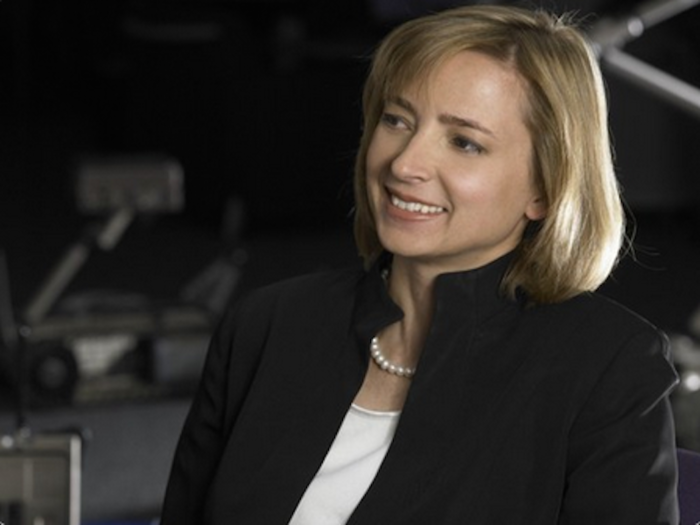
Helen Grenier is CEO of CyPhy Works and one of the iconic figures in the world of robotics.
She co-founded iRobot, which makes robots for industrial, consumer, and military markets. She co-designed the first version of the iRobot Roomba, too.
Her new company, CyPhy Works, operates in the latest area of robotics: drones.
Grenier's working on a commercial drone, and last year her company enticed 1,514 backers on Kickstarter to pledge $882,478 to help her do it. She then went on to secure about $32 million in VC investment.
Before founding iRobot, Grenier worked at NASA's Jet Propulsion Lab and MIT's Artificial Intelligence Lab. In 2007, she was inducted into the Women in Technology Hall of Fame.
No. 7: Red Hat's Denise Dumas
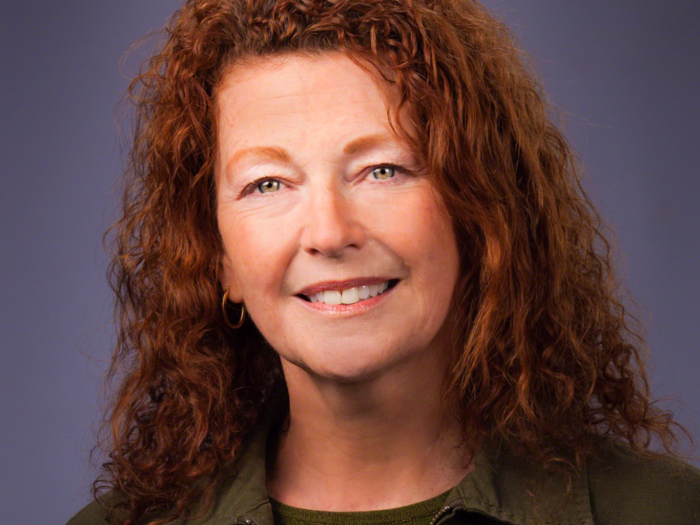
Denise Dumas is vice president of software engineering, Operating System at Red Hat where she leads the team responsible for Red Hat's flagship product, Red Hat Enterprise Linux (RHEL).
RHEL is an extremely popular version of Linux, used by more than 90% of Fortune 500 companies, Red Hat says.
Dumas joined Red Hat in 2008 as a senior engineering manager and worked her way up from there. Today she manages a team of hundreds of developers worldwide.
She says her job is to “keep the trains running on time, keep people connected, and recognize the implications that the team's work has on other areas of the business, while also maintaining sensitivity to the team’s cultural differences."
No. 6: Google's Anna Patterson

Anna Patterson is VP of engineering in research and machine intelligence at Google.
Patterson has had a storied career at Google, starting with her work on its web search engine and also leading teams in Ads and Shopping. At one time, she was also responsible for a big chunk of Google Play during the time Android grew from 40 million phones to over 800 million.
In 2005, she left to try and take on Google, founding a new web search startup called Cuil, which raised $33 million. But that didn't work and it shut down, never making it of stealth mode.
Google took her back with open arms and gave her a leadership role in another important new area: machine learning. All the big tech vendors are working to build smarter computer systems that will be the backbone of smarter devices and cloud computing services.
Engineering was in Patterson's blood, too. Her dad was an engineer for NASA.
No. 5: Amazon's Sharon Frinks Chiarella
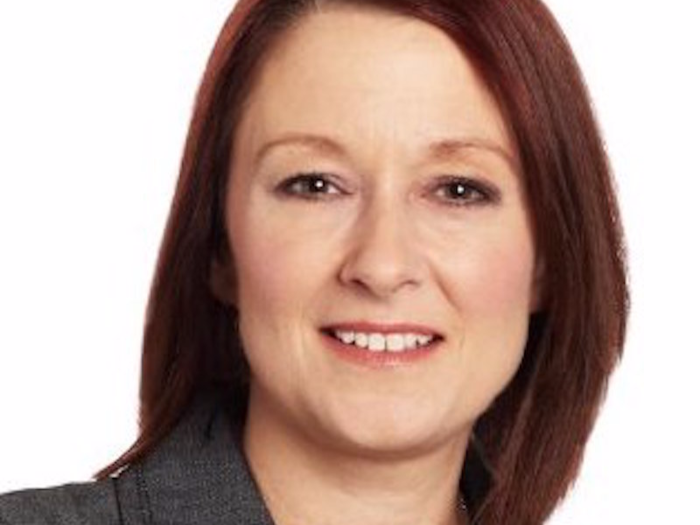
Sharon Frinks Chiarella is a vice president at Amazon who runs an area called "Community Shopping."
This includes Gifting, Wish List, Amazon's all important Customer Reviews section and, she says on her LinkedIn page, "a number of cool experiences that are too stealth to mention."
Sharon made a name for herself at Amazon when she became the vice president responsible for Amazon Mechanical Turk, the crowdsourced employment service. She ran it back in the day when no one really knew what crowdsourcing was. Now there are more than 50,000 people working for the site, all over the world.
Sharon also cut her teeth back in the day at Microsoft, and did a stint at Yahoo and online email service Presto before landing at Amazon.
No. 4: Dropbox's Jessica McKellar
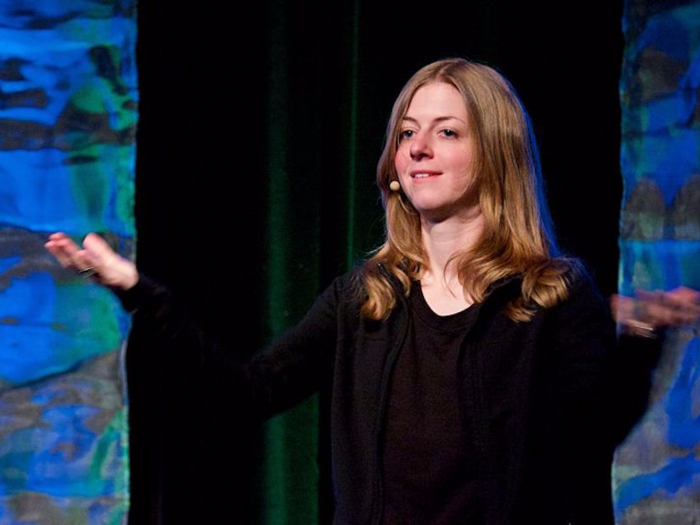
Jessica McKellar is director of engineering at Dropbox and a major figure in the world of Python, a popular web development programming language.
She was a founder and VP of engineering at Zulip, a Yammer/Slack alternative. Two years after it launched, Dropbox acquired Zulip, kept her, and gave Zulip away for free as an open source project.
This was the second startup she helped found and sold quickly. The first was called Ksplice, which sold to Oracle. Ksplice was a way to update Linux software.
McKellar contributions span across the open source world: she's written code for the Linux kernel itself (the heart of Linux), she's a Python Software Foundation fellow, and has mentored others through Google Summer of Code, GNOME Outreach for Women, and Hacker School.
She's also co-authored books, is a regular public speaker, and organized the world's largest Python user group, and she was just named as a finalist for Red Hat's Women in Open Source awards.
No. 3: Apple's Tara Bunch
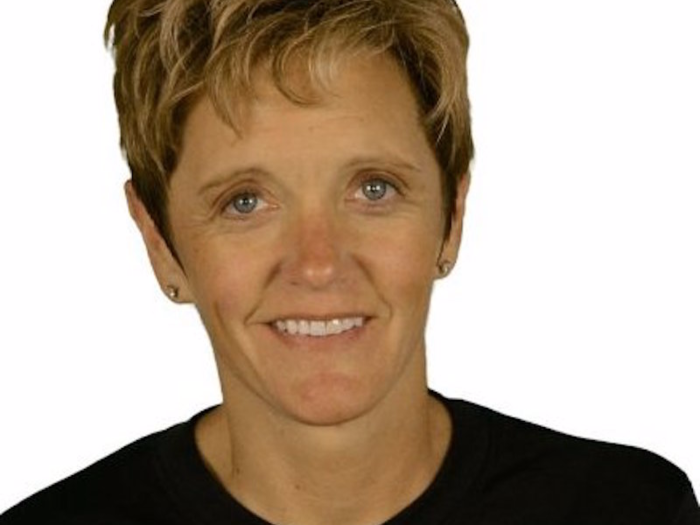
Tara Bunch is vice president of AppleCare, Apple’s technical service and support organization. This is the organization that makes sure when something goes wrong with your Apple device, Apple has a fix for you.
Apple's customer satisfaction rates are some of the highest in the tech world and watched by the highest execs who credited them for much of the company's success.
For instance, in January, Apple CEO Tim Cook touted Apple's high customer satisfaction rates for its latest iPhone and iPads, saying that research from 451 Research showed Apple had a 99% customer satisfaction rating for its iPhone 6S and 6S Plus, and 97% for the iPad Air 2.
Bunch joined Apple in 2012 from a 20-year career at Hewlett Packard where she was a senior vice president of the Global Customer Service and Support Operations.
No. 2: Microsoft's Peggy Johnson
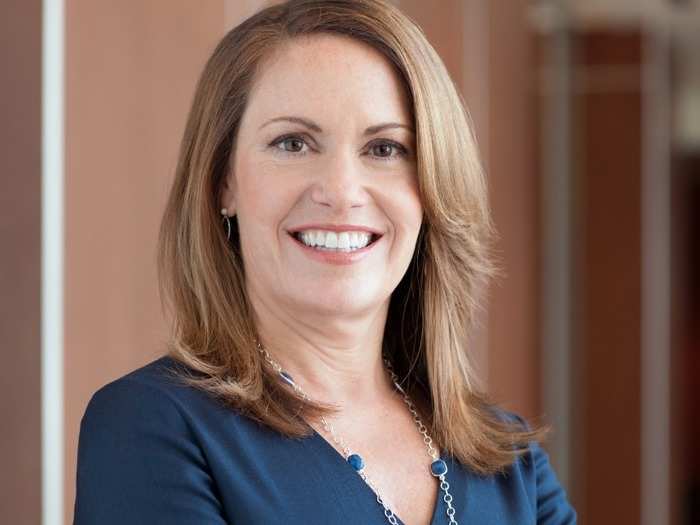
Peggy Johnson is executive vice president of business development at Microsoft and one of Satya Nadella's first big hires in the post-Steve Ballmer era.
She came to Microsoft after 24 years at Qualcomm and wasted no time in the new business development role created by Nadella.
Johnson helped Nadella usher in a new collaborative culture, shepherding new partnerships with Salesforce, Dropbox, Uber, Yahoo, and AOL. What's more, she's been named to the company's 12-person senior leadership committee.
She also represents the US on the Asia-Pacific Economic Cooperation Business Advisory Council and serves on several boards, including AOL’s leadership platform for women, Makers, and Live Nation Entertainment.
No. 1: Google's Diane Greene
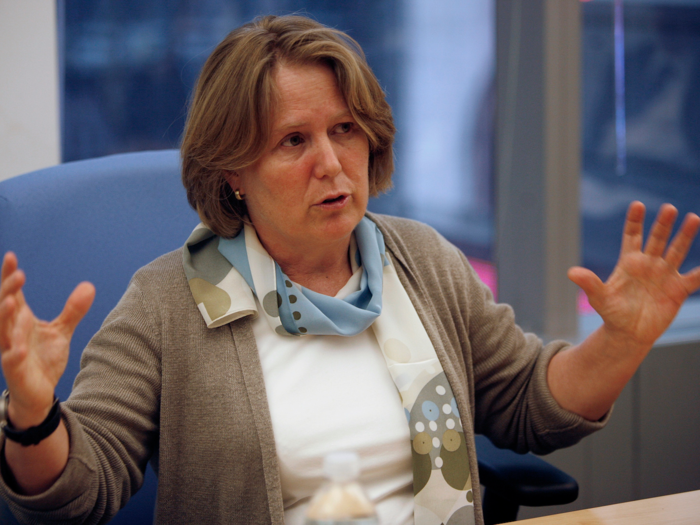
Diane Greene has been a powerful engineer and tech entrepreneur for decades, but in 2015 she burst into the scene in an even bigger way.
That's because Google bought her stealth startup in order to hire her to run its cloud computing business.
Greene's first huge success was VMware, the company she founded with her husband and Stanford professor, Mendel Rosenblum, and a few others in the late 1990s. She led the company as its first CEO through its $635 million sale to EMC. She then went on to become a big angel investor while working on her new startup.
She was on the board at Google when it bought her company for $380 million, so she and her husband are donating their take (worth over $150 million) to charity, they said.
At Google, Greene is leading a new team that combines all of the company's cloud businesses. Google's goal is make its cloud business bigger than its ad business by 2020, and given that Google brought in $66 billion in revenue last year, mostly from ads, that's a big, powerful job.
Popular Right Now
Popular Keywords
Advertisement